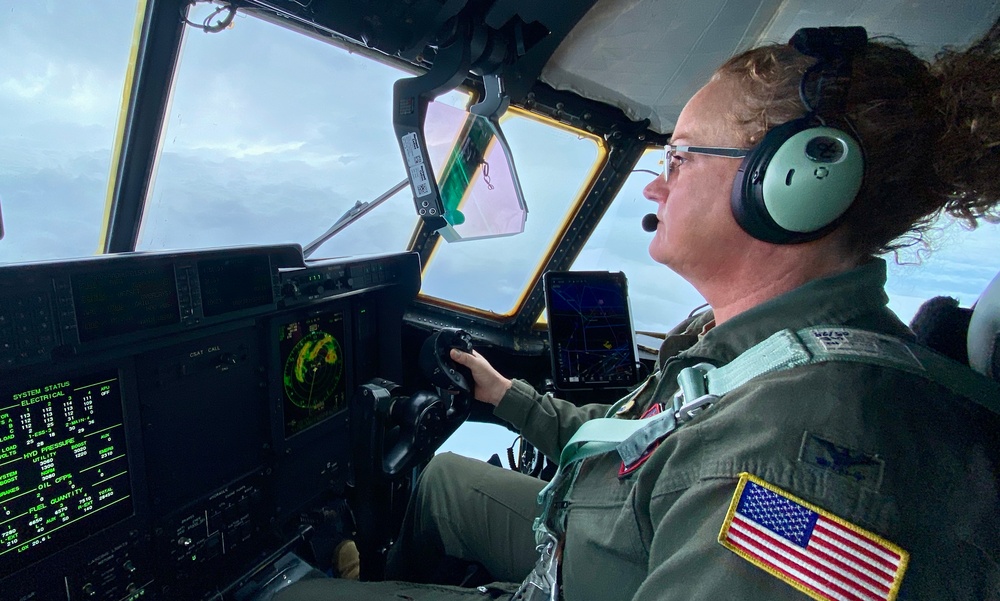DVIDS – News – Multi-mission buoy tender keeps Gulf Coast open for business
PENSACOLA, Fla. – U.S. Coast Guard Cutter Cypress (WLB-210) helps to keep mariners on course around the resource-rich and storm-prone waters of the Gulf of Mexico.
From Apalachicola, Florida, to Brownsville, Texas, near the U.S.-Mexico border, the 225-foot seagoing buoy tender patrols a 900-mile area and maintains the Aids to Navigation (ATON) that guide mariners through some of the busiest waterways in the nation.
Commissioned in 2002, Cypress is responsible for more than 125 floating ATON that mark deep-draft shipping channels and provide markers for shoal water and shipwrecks. The cutter services ATON that guide mariners into Matagorda, Texas; Galveston, Texas; Southwest Pass, Louisiana; Gulfport, Mississippi; and Pensacola, Florida.
“Cypress supports the public and private stakeholders through our contributions to a safe, navigable Marine Transportation System,” said Lt. Cmdr. Christopher A. Bonner, the commanding officer of the Pensacola, Florida-based buoy tender.
A 12-year Coast Guard veteran from Ashaway, Rhode Island, Bonner has also served on U.S. Coast Guard Cutter Maple (WLB-207) and U.S. Coast Guard Cutter Fir (WLB-213).
Buoy tenders and the Coast Guard crewmembers who serve on them do the heavy lifting to keep the nation’s maritime economy on course. The U.S. Coast Guard maintains more than 48,000 buoys and beacons across 25,000 miles of inland, intracoastal and coastal waterways. These Aids to Navigation guide millions of mariners and trillions of dollars of trade into the United States. U.S. waterways generated $5.4 trillion in economic activity in 2018.
The Coast Guard recently produced its first ever Maritime Commerce Strategic Outlook to chart the way ahead for its waterways management and navigation systems missions.
Bonner said Cypress is often called to restore Aids to Navigation and reopen ports following hurricanes across the storm-prone region.
“Cypress is one of the ‘go to’ assets during natural disaster response, specifically hurricanes,” said Bonner.
In 2017, Cypress responded to Hurricanes Harvey, Irma and Maria. Following Hurricanes Florence and Michael in 2018, Cypress helped to reopen 14 major ports in Florida, Texas, North Carolina, Puerto Rico and the U.S. Virgin Islands.
A multi-mission cutter, Cypress has conducted other operations from responding to the Deepwater Horizon oil leak to maintaining National Oceanic and Atmospheric Administration (NOAA) weather buoys that provide weather data to mariners.
Cypress crewmembers have also saved lives during search and rescue missions and defended the nation’s maritime borders during interdiction operations. In spring 2007, Cypress completed her first extended Alien Migrant Interdiction Operations (AMIO) patrol for Coast Guard District Seven. During this patrol, Cypress successfully interdicted two go-fast smuggler vessels and seven suspected smugglers. Cypress crewmembers also processed more than 75 illegal migrants.
Across the Gulf Coast region, Cypress routinely works with joint and interagency partners.
In December 2018, off the coast of Galveston, Texas, Cypress crewmembers helped the National Aeronautics and Space Administration (NASA) to conduct an open water float test of an Orion return capsule, designed to ensure the capsule would remain upright after splashdown.
“Cypress provided a safe and capable platform for NASA to demonstrate the Crew Module Uprighting System (CMUS) performance in a natural wave environment with a flight-like mockup of the Orion capsule,” said Barbara Janoiko, NASA’s Orion CMUS test lead. Janoiko said the test “will help the Orion Program successfully fly these and future Orion deep space exploration missions and bring the crew home safely. “
According to Tara Radke, the NASA lead for Orion Landing and Recovery Systems, the Cypress-based open water capsule test was the first of its kind in more than four decades since the Apollo program.
“Cypress not only allowed Orion testing in an important mission environment, it also helped develop test procedures and techniques that could be used on future Orion capsule testing,” said Radke. “These tests are very important to the Orion program to ensure the safety of our astronauts.”
Cypress has also partnered with another well-known, high flying organization. In 2004, Cypress participated in a unique salvage operation that helped the buoy tender to form an enduring bond with the Blue Angels, the legendary U.S. Naval Flight Demonstration Squadron that performs at air shows across the nation.
During a training flight, a Blue Angels pilot safely ejected and his F/A-18 Hornet went into the Gulf of Mexico. Cypress teamed up with the U.S. Navy’s Mobile Diving and Salvage Unit 2 to salvage the Hornet. Using its 40,000-pound capacity buoy crane, Cypress hoisted a 38,000-pound F/A-18 off the seafloor.
Today, Cypress participates in the annual Blue Angels air show in their shared homeport of Pensacola.
“Cypress still maintains a strong relationship with the Blue Angels, serving as a center point for aircraft maneuvers during the annual Pensacola Beach Air Show,” said Bonner.
| Date Taken: | 02.27.2020 |
| Date Posted: | 02.27.2020 10:18 |
| Story ID: | 364021 |
| Location: | PENSACOLA, FL, US |
| Hometown: | ASHAWAY, RI, US |
| Web Views: | 361 |
| Downloads: | 1 |
PUBLIC DOMAIN
This work, Multi-mission buoy tender keeps Gulf Coast open for business, by Walter Ham, identified by DVIDS, must comply with the restrictions shown on https://www.dvidshub.net/about/copyright.


 Private Internet Access gives you unparalleled access to thousands
of next-gen servers in over 83 countries and each US state. Your
VPN experience will always be fast, smooth, and reliable.
Private Internet Access gives you unparalleled access to thousands
of next-gen servers in over 83 countries and each US state. Your
VPN experience will always be fast, smooth, and reliable.
